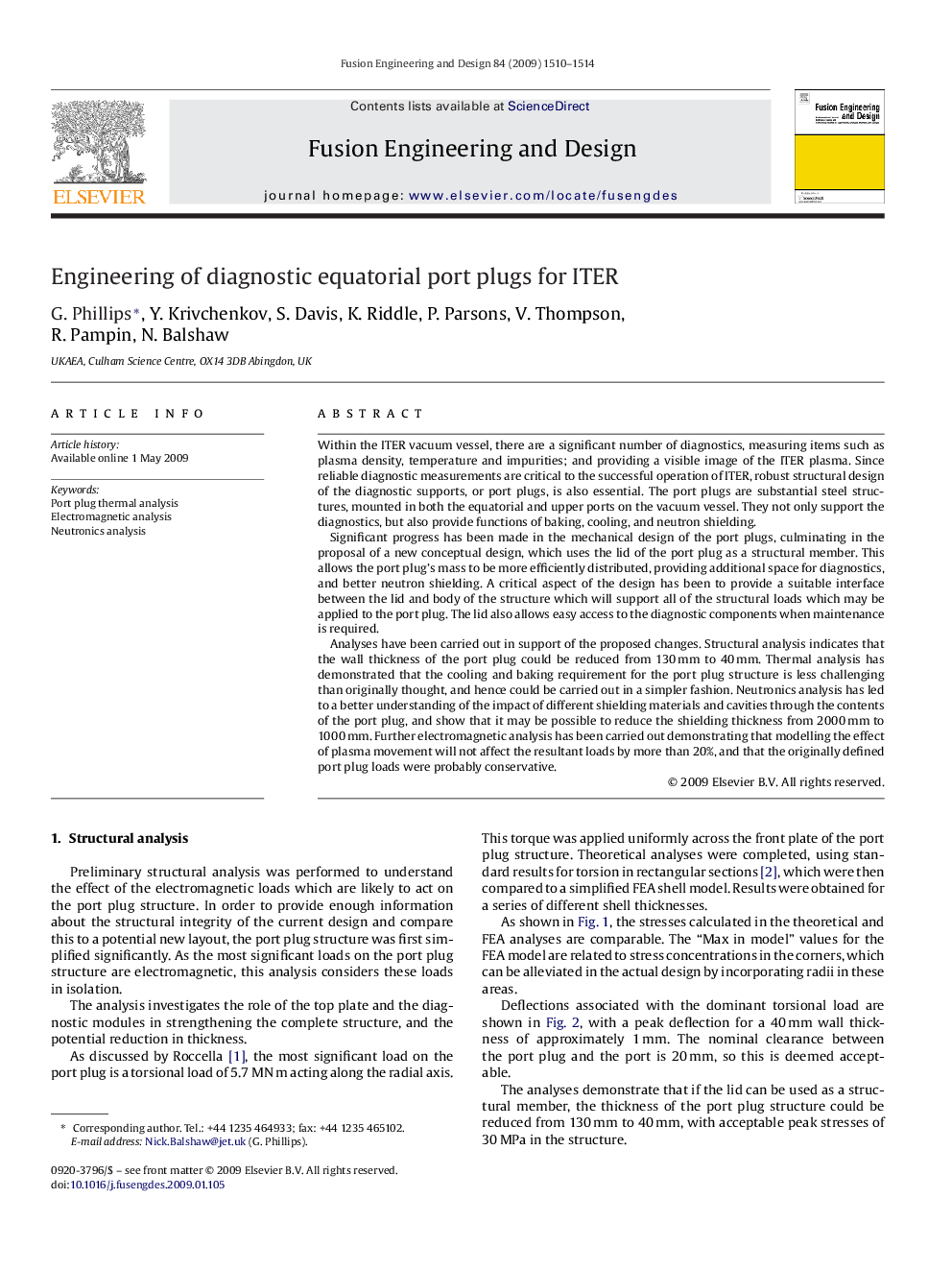| Article ID | Journal | Published Year | Pages | File Type |
|---|---|---|---|---|
| 273181 | Fusion Engineering and Design | 2009 | 5 Pages |
Within the ITER vacuum vessel, there are a significant number of diagnostics, measuring items such as plasma density, temperature and impurities; and providing a visible image of the ITER plasma. Since reliable diagnostic measurements are critical to the successful operation of ITER, robust structural design of the diagnostic supports, or port plugs, is also essential. The port plugs are substantial steel structures, mounted in both the equatorial and upper ports on the vacuum vessel. They not only support the diagnostics, but also provide functions of baking, cooling, and neutron shielding.Significant progress has been made in the mechanical design of the port plugs, culminating in the proposal of a new conceptual design, which uses the lid of the port plug as a structural member. This allows the port plug's mass to be more efficiently distributed, providing additional space for diagnostics, and better neutron shielding. A critical aspect of the design has been to provide a suitable interface between the lid and body of the structure which will support all of the structural loads which may be applied to the port plug. The lid also allows easy access to the diagnostic components when maintenance is required.Analyses have been carried out in support of the proposed changes. Structural analysis indicates that the wall thickness of the port plug could be reduced from 130 mm to 40 mm. Thermal analysis has demonstrated that the cooling and baking requirement for the port plug structure is less challenging than originally thought, and hence could be carried out in a simpler fashion. Neutronics analysis has led to a better understanding of the impact of different shielding materials and cavities through the contents of the port plug, and show that it may be possible to reduce the shielding thickness from 2000 mm to 1000 mm. Further electromagnetic analysis has been carried out demonstrating that modelling the effect of plasma movement will not affect the resultant loads by more than 20%, and that the originally defined port plug loads were probably conservative.
